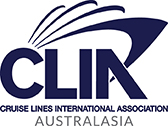Cruise tourism generates record A$5.63 billion for Australian economy
 Australia’s cruise industry has generated a record A$5.63 billion for the national economy in its first year of revival, bringing new levels of employment and visitor spending to destinations around the country.
Australia’s cruise industry has generated a record A$5.63 billion for the national economy in its first year of revival, bringing new levels of employment and visitor spending to destinations around the country.
An economic impact assessment jointly commissioned by Cruise Lines International Association (CLIA) and the Australian Cruise Association (ACA) shows cruising has rebounded rapidly since local operations resumed in mid-2022, bringing significant economic impact to every state and coastal territory.
The assessment shows A$5.63 billion in total economic output generated by cruise tourism in Australia during the 2022-23 financial year, a 22.1% increase over 2018-19*. It shows cruise tourism supported a total employment of 18,225 full time equivalent positions around Australia, and total wages worth A$1.82 billion to Australian workers.
CLIA Managing Director in Australasia Joel Katz said the economic impact from cruise tourism last financial year was the highest ever recorded in Australia.
“Cruising returned to Australia much later than other parts of the world, but the ships have been resoundingly welcomed by cruise fans who have been heading back to sea in huge numbers,” Mr Katz said. “The 2022-23 year has brought higher levels of passenger spending, higher levels of cruise line spending, and record levels of economic output around Australia. The result is a resurgent cruise industry worth A$5.63 billion to the Australian economy.”
ACA Chief Executive Officer Jill Abel said the level of employment supported by cruising was also at a record high, bringing renewal to dozens of tourism destinations around the country.
“Cruise ships visited more Australian destinations than ever in 2022-23, reaching 62 communities around our coast,” Ms Abel said. “Together these destinations welcomed 1,354 ship visits, which generates enormous income for businesses like tourism operators, hotels and restaurants, retailers, transport providers and port operators. The supply chain that supports cruising is extensive, from the travel agents who manage the passengers’ arrangements through to the farmers who provide Australian produce served on board.”
The Value of Cruise Tourism economic impact assessment for Australia was prepared by AEC Group on behalf of CLIA and the ACA.
Its key findings for 2022-23 show:
● A total economic output of A$5.63 billion nationally (up 22.1% over 2018-19*), including direct output of A$2.50 billion.
● Total employment of 18,225 full time equivalent positions nationally (up 9.9%), with total wages income of A$1.82 billion (up 35.7%).
● A total of 62 Australian ports and destinations visited, welcoming a combined 1,354 ship visits.
● A total of 3.35 million passenger visit days (down 4.1% due to fewer ships operating in the region during the industry’s recovery phase).
● Direct passenger expenditure of A$1.49 billion (up 10.6%) and direct crew expenditure of A$52.0 million (up 48.1%).
An average passenger spend per day on shore of A$446 per person (up 15.2%). Average crew ● spend per day on shore A$137 per person (up 7.9%).
● The largest beneficiary of direct passenger expenditure was the hotel and accommodation sector which received A$457.1 million, or 30.6% of passenger spending. Other beneficiaries included food & beverage (A$300.1 million, 20.1%), shore excursions (A$194.3 million, 13.0%), transport (A$208.8 million, 14.0%), retail shopping (A$163.1 million, 10.9%) and entertainment (A$57.8 million, 3.9%).
● Direct cruise line expenditure of A$1.17 billion (up 8.3%).
● Cruise line expenditure included A$227 million (up 1.4%) paid to Australian ports and governments.
● New South Wales recorded the biggest benefit from cruising with a total economic impact of A$2.75 billion, or 48.8%) of the national total, which supported 8,908 full time equivalent jobs.
● Queensland is the country’s second-largest cruise economy, with a total economic output of A$1.69 billion, or 29.9% of the national total, which supported 5,546 full time equivalent jobs.
● Victoria recorded a total economic impact of A$379.5 million, which supported 1,173 full time equivalent jobs, followed by Western Australia (A$333.5 million, 1,055 jobs), South Australia (A$215.4 million, 704 jobs), Tasmania (A$144.1 million, 455 jobs) and the Northern Territory (A$127.3 million, 384 jobs).
*All comparisons are to 2018-19, the previous complete year of cruise operations in Australia. This year’s economic impact assessment adopted a revised methodology to calculate the direct economic output generated by cruise tourism expenditure, aligning with methodologies used by the Australian Bureau of Statistics. This shows a record level of total economic output, despite being a more conservative method of calculation. Figures for 2018-19 comparisons have been adjusted in line with the new methodology.
(Cruise tourism generates record A$5.63 billion for Australian economy – CLIA, CLIA Australasia)


